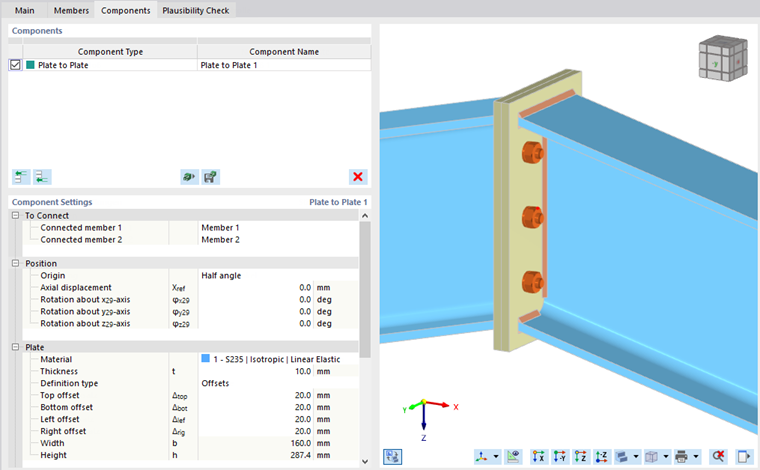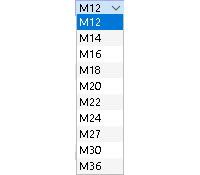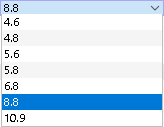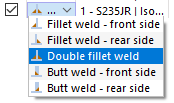The Plate to Plate component allows you to connect two components using two end plates, bolts, and welds.
To Connect
The first category of the component settings manages the definition of the connected members.
Position
The second category controls the position of both plates.
You can define the Origin of the plates either as Perpendicular or by Half angle. Select the relevant option from the list.
If you select the Perpendicular option, the plates are set in the plane perpendicularly to Connected Member 1. Specify the Axial displacement if you want to move the plate along the center axis of that member.
If you define the position by Half angle, the plates are inserted into the plane which is parallel to the axis of the angle between both connected elements. The "Rotation about xyz-axis" options allows you to rotate the plates about the local axes.
Plate 1
The next category controls the definition of the end plate that connects to the connected Member 1. Select the plate material from the defined materials or create a new material. Then, enter the thickness of the plate.
You can define the dimensions of the plates either by Offsets or by Dimensions and position. Select the relevant option from the list.
If you define the plates by Offsets, their sizes are derived from the cross-section dimensions of "Connected Member 1". That is, how far the end plate overhangs the bounding box of the cross-section. You can check the total plate dimensions in the last rows, but you cannot change them.
If you select the Dimensions and position option, you can directly enter the size of the plate. The position of the end plate is related to the "Connected Member 1": The vertical position is measured from the upper edge of the section (positive values upwards), while the horizontal eccentricity is measured from the center of gravity of the member cross-section.
Switching between the definition types will not change the position or dimensions of the plate. The values are recalculated to reflect the current definition.
Plate 2
If you activate the Identical to Plate 1 option, you cannot make any further settings here. If the option is deactivated, all setting options are available, as for Plate 1.
Bolts
This category manages the properties of the bolts.
Define the bolt diameter and bolt class in the first row by selecting the respective entries from the lists.
In the next two rows, you can define the spacing of the bolts with respect to the horizontal and vertical directions. The edge and center distances are entered in the line separated by spaces. Missing entries are automatically completed in a way that is consistent with the geometry of the end plate.
Activate the Preloaded Bolts function to consider prestress. The preloading force factor and the friction coefficient under the end plate are defined in the Ultimate Configuration.
If activating the Shear plane in thread option, the lower strength (reduced area) according to the selected design standard is considered for the shear design.
Furthermore, you can also deactivate individual bolts in the Bolt list if you want to create an irregular bolt pattern.
Welds
The last category controls the welds for the individual parts of the end plate joint. If you clear the check box, this weld will not be applied.
If you select the area to the right of the check box, you will find a list from which you can select the weld type. There are several types of fillet welds and butt welds available.
For fillet welds, it is necessary to define each thickness.










